Middlebury is ending the semester awash not only with hard discussions on stress and appropriation, but with a new surge of tree vandalism.
Four trees have been vandalized in the last four days. Three this past weekend, 1 pulled up out of the ground by Battell, one by HMKL pulled up and dragged to the front door, and one snapped at the base, only 20’ from a dorm.
Then two nights ago a memorial tree was rocked back and forth, unsuccessfully broken off, so instead all the branches were snapped off, and the top severed and left on the lawn. This is a new on our campus, as we’ve never had a memorial tree killed before.
Don’t think of it as vandalism, however, think of what is happening as aggression and violence. Vandalism is breaking off random branches here and there; violence is taking a well-established tree with a 3” trunk at rocking it back and forth for probably ten minutes until it snaps and breaks at the base. A former student wrote an entire term paper on tree vandalism, and told of the link of alcohol fueled aggression and violence against trees.
But, like many problems here on campus, who dares speak up? I’d certainly be nervous to confront someone in the act, and I carry chainsaws around for a living. I think back to my time on community council last year, with long discussions led by Ben Bogin on a Social Honor Code, not just an academic one. Read William and Mary’s code, or Haverford’s, with their ‘Confrontation’ philosophy, as difficult and engaging as President Patton’s wish for more and better arguments.
So maybe our department no longer plants smaller trees, as the smaller size seems to encourage vandalism. The field house, for example, was planted in 3” trees, and they would be nearly impossible to pull out of the ground. The problem with that, like many problems we face this semester, is the concept of resiliency.
Like people, trees and forests do better in large, diverse groups. Diversity brings resiliency- look to the lessons of Dutch elm disease when many, many towns lost nearly all of their shade, or look to our future when Emerald Ash Borer moves into Vermont and destroys all our ash trees, almost 15% of all trees on campus. We are diverse in tree species, so 15% is a hit, albeit an unpleasant hit that we can suffer through.
But only if we keep planting our forest without ceasing, and keep the goal of diversity. The nursery industry in Vermont doesn’t have a big diverse selection in large trees, so we plant smaller unusual trees in addition to the larger ones. Smaller trees are also easier to plant, and cheaper, so we can plant more trees in a year, and come in many different species, much more than basic maple, oak, and honeylocust. It’s these small trees, however, that keep getting vandalized, snapped, and pulled up out of the ground.
Our campus forest is losing resiliency, and to be honest, so am I.
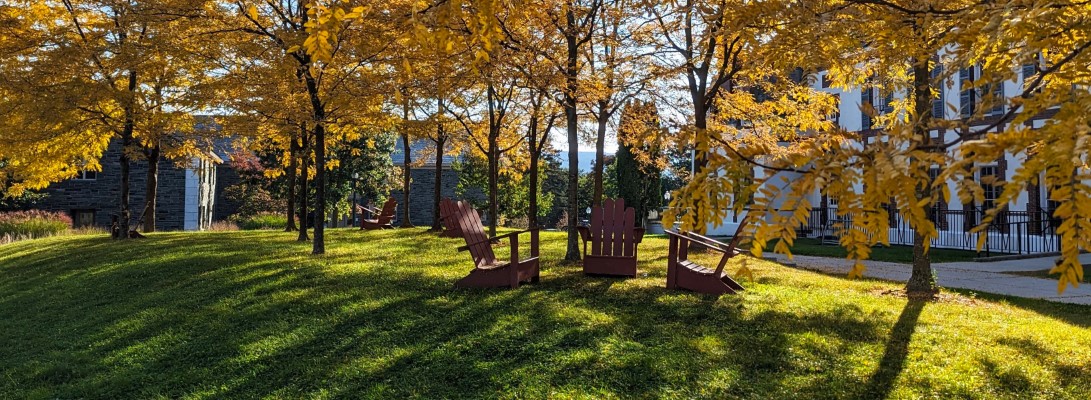
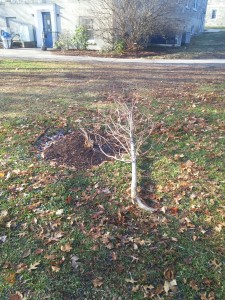
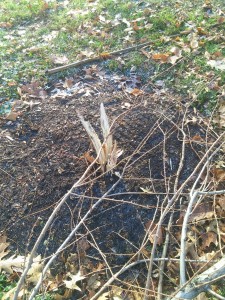
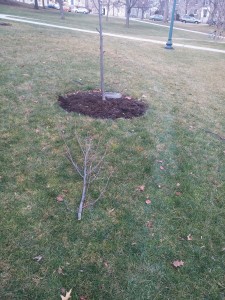
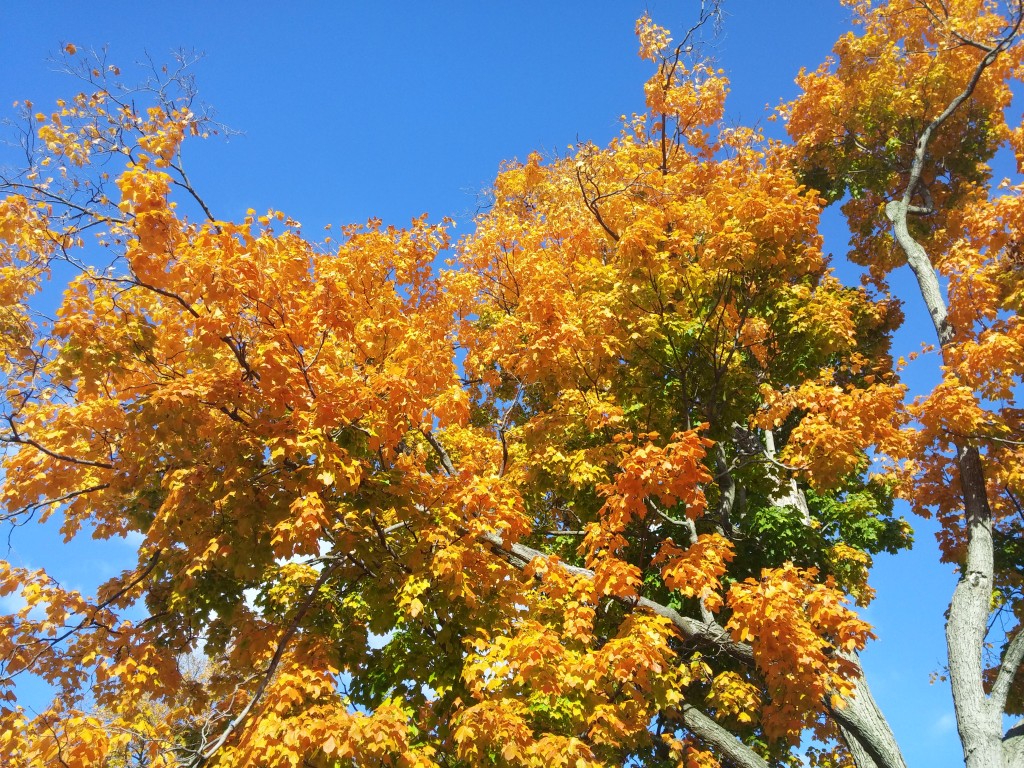
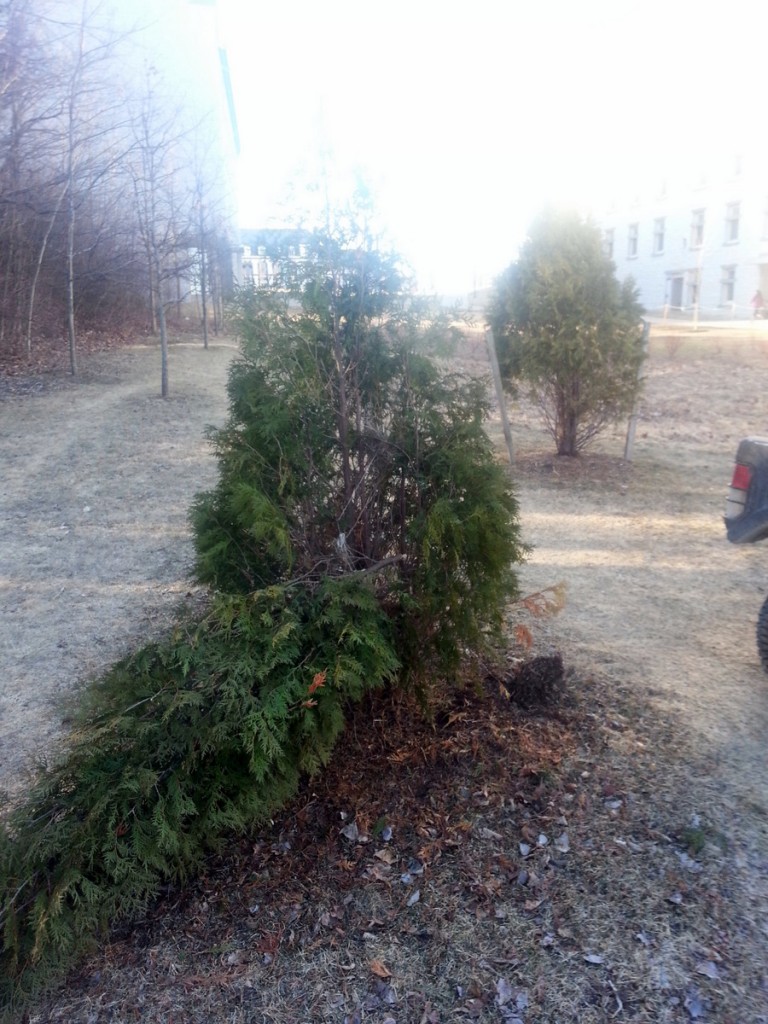
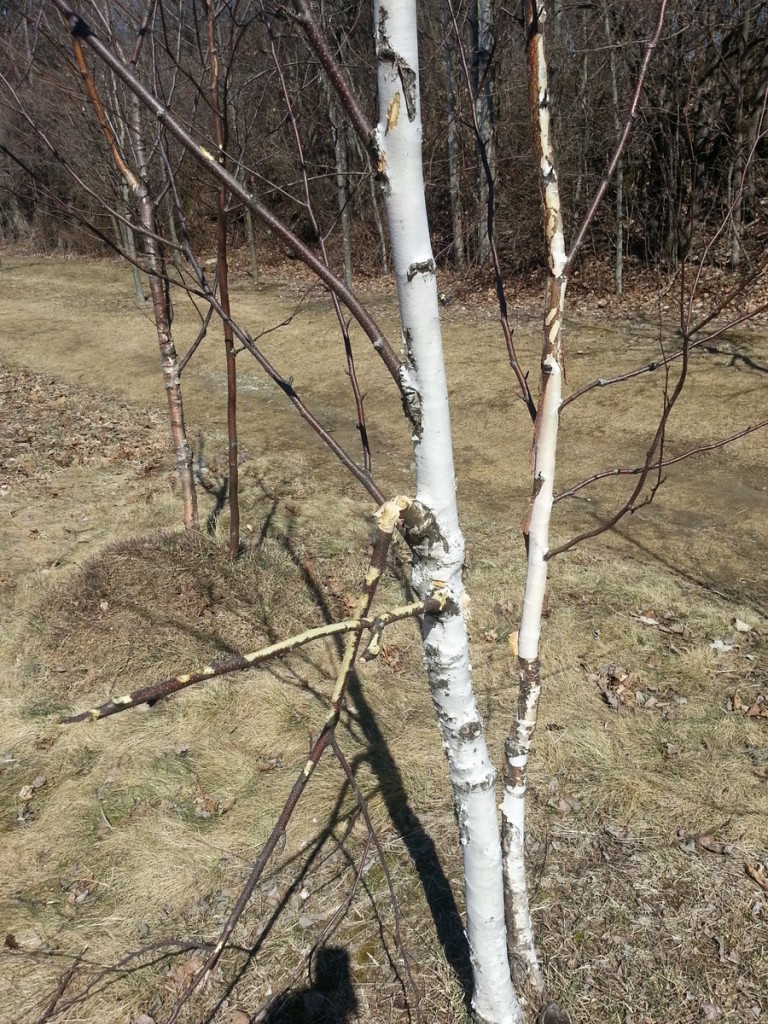
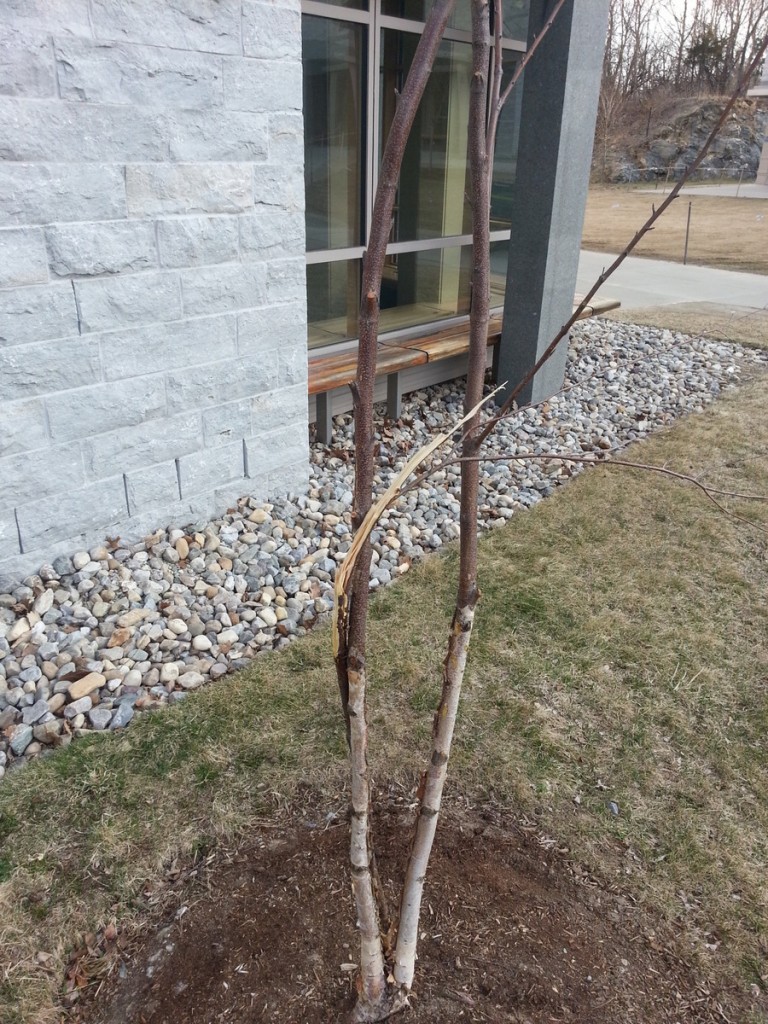
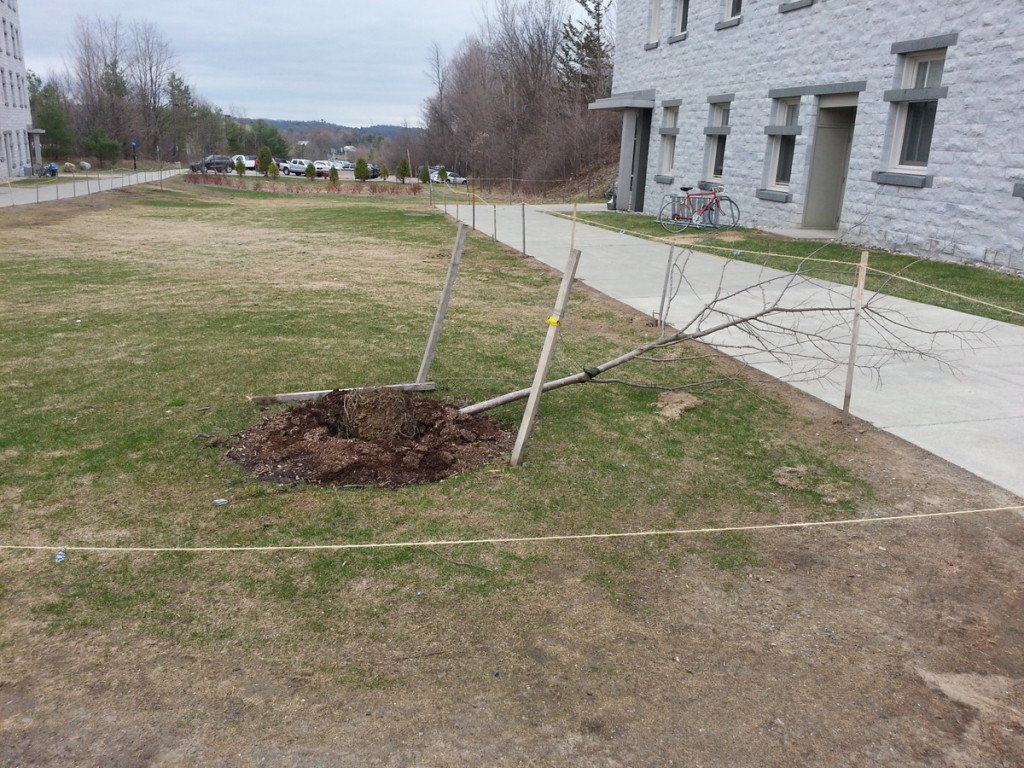
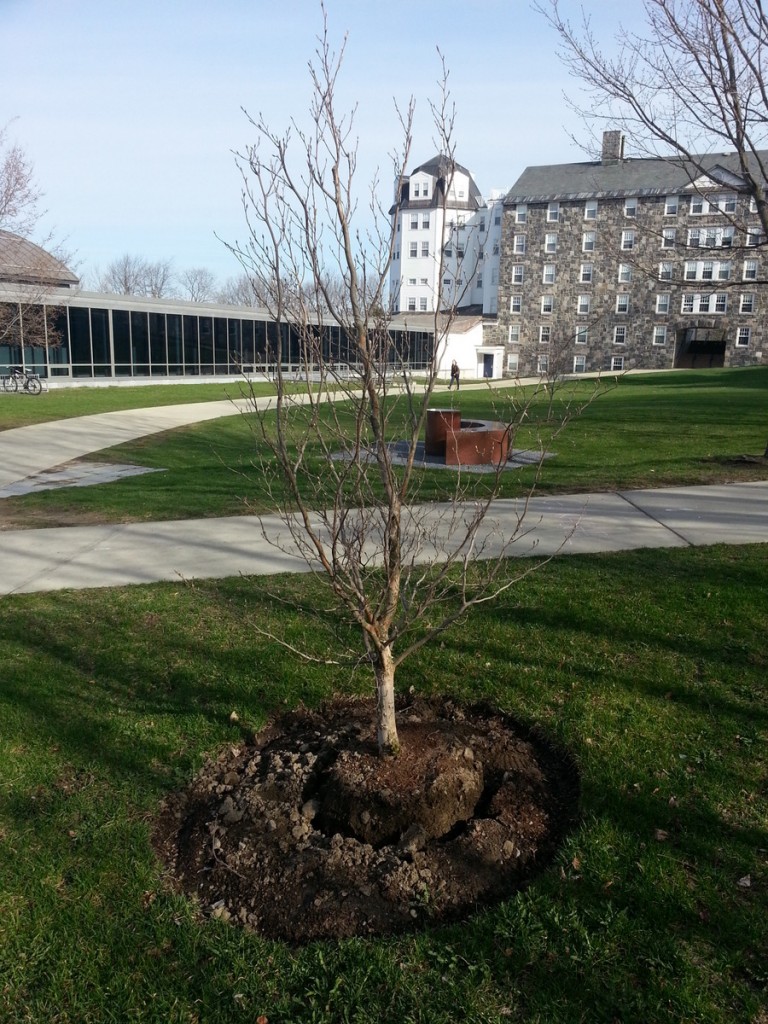
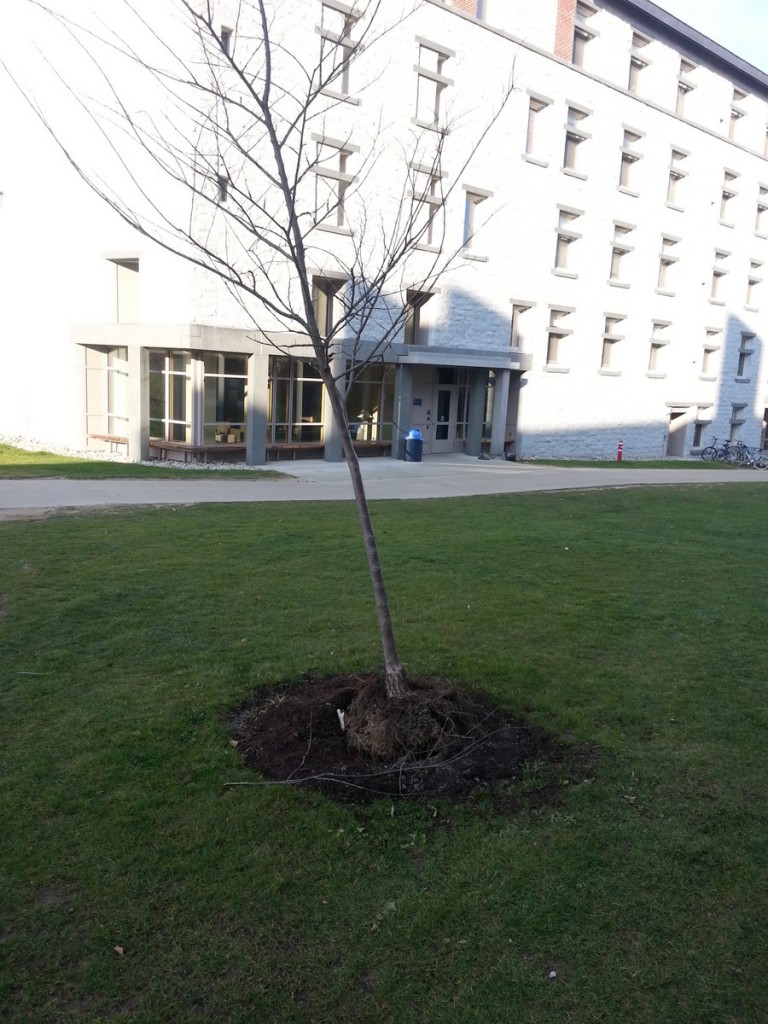

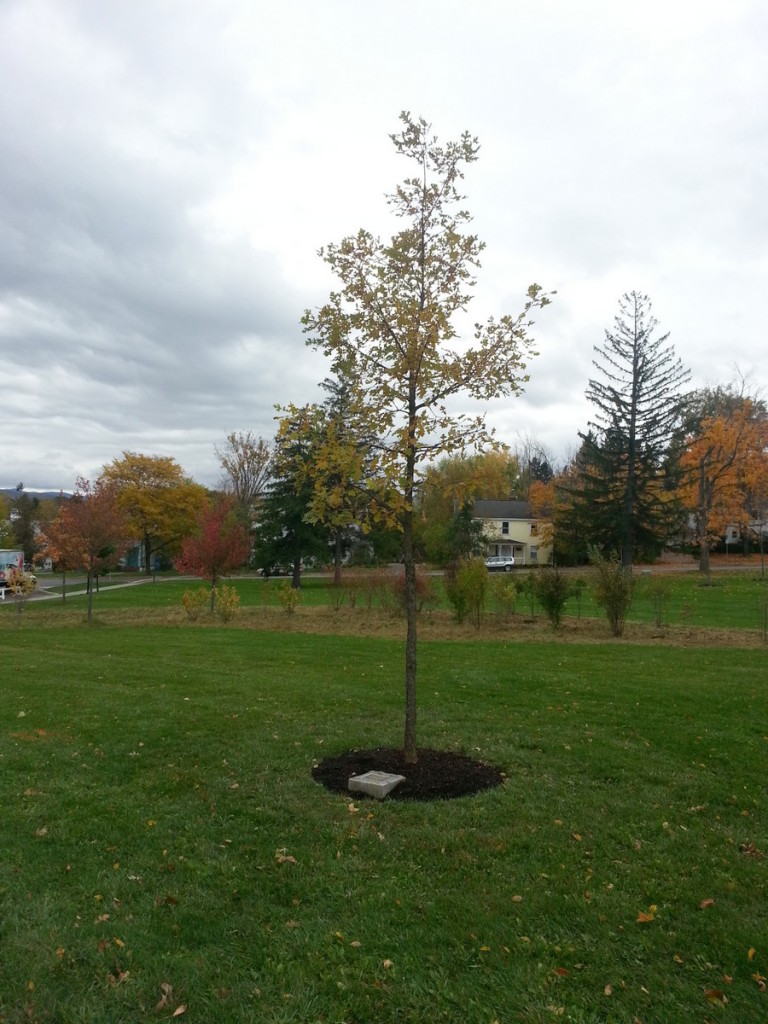
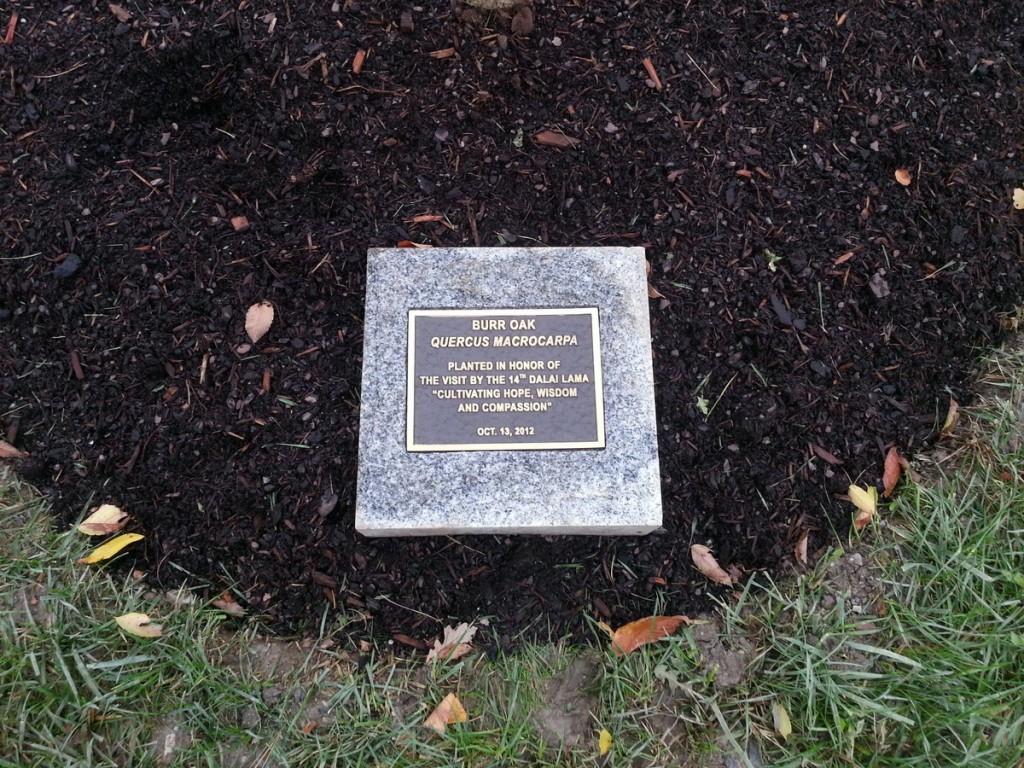
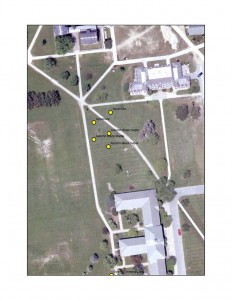
You must be logged in to post a comment.